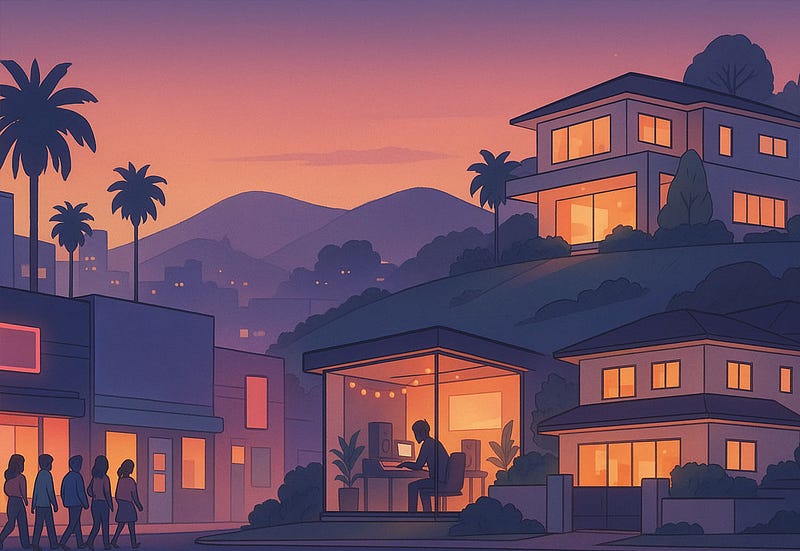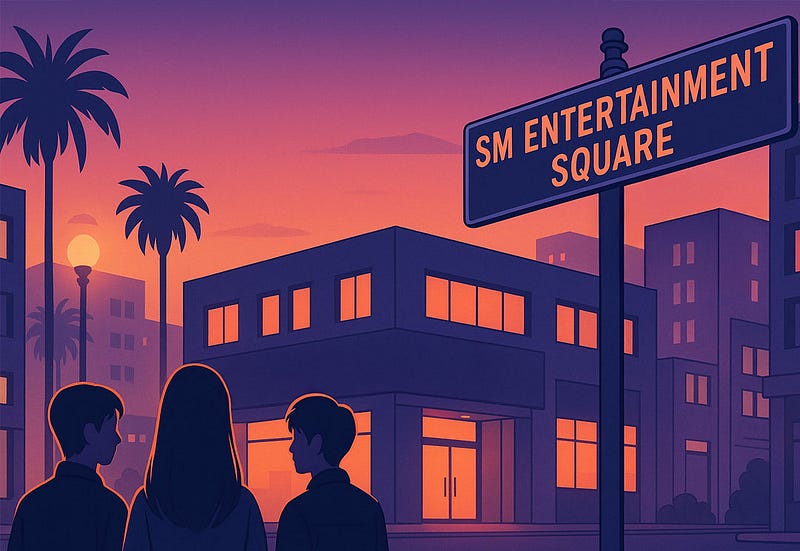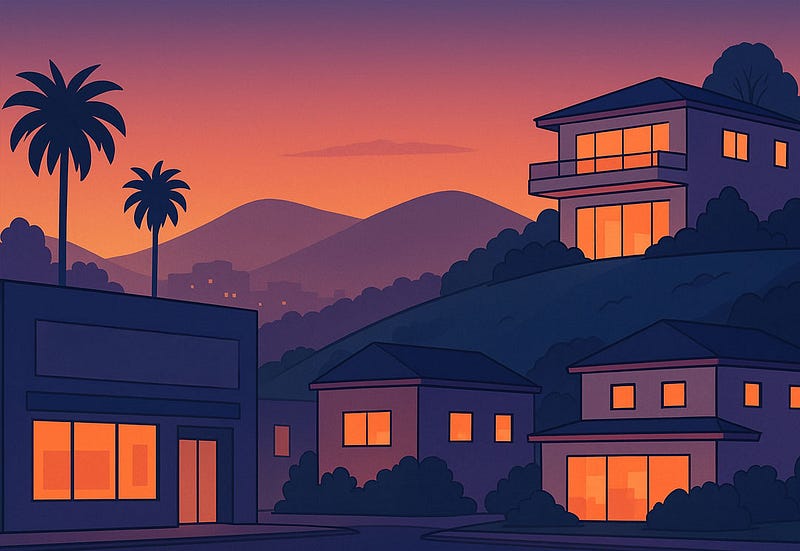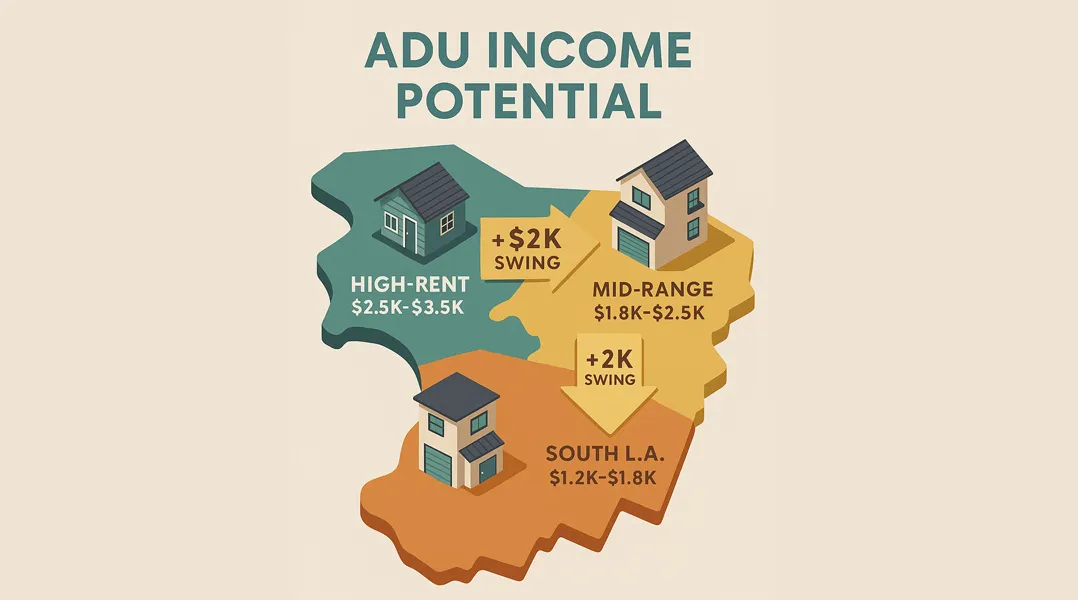Blog
Keep updated with recent real estate news.
Which K?Pop Idols Call Los Angeles Home and What That Reveals About LA’s Culture and Communities

From dazzling stages to global charts, K-Pop’s influence is undeniable. But beyond the music, the personal lives of your favorite idols, especially their connection to vibrant cities like Los Angeles, are also part of their story. Los Angeles is not just a tour stop for K-Pop’s biggest names. For many, it is a strategic base, a creative haven, or even a place they have chosen to lay down roots.
Let’s explore the growing ties between K-Pop idols and Los Angeles, revealing what their presence signifies for LA’s evolving culture, its communities, and even its real estate trends. The growing connection between K-Pop idols and Los Angeles is more than celebrity news, it’s a powerful indicator of LA’s dynamic cultural evolution and its role as a truly global city. Their presence highlights LA’s appeal as an entertainment hub, the strength of its diverse communities (especially the Korean diaspora), and the vibrant fan culture that thrives here. This influences everything from luxury home choices to the commercial vitality of neighborhoods like Koreatown. This unique blend of global celebrity and local community shapes the very fabric of Los Angeles, making it an exciting place to live, invest, and experience a truly international lifestyle.
Whether you’re a K-Pop fan, a prospective homeowner, or an astute investor, understanding these connections enriches your perspective on LA’s unique and ever-evolving appeal. To further explore how zoning, culture, and urban living intersect, we encourage you to delve into the zoning maps of these fascinating areas using tools like Terrakan or ZIMAS, and discover the deep cultural and code-based appeal that shapes Los Angeles.

K-Pop Idols & Their LA Residences: A Glimpse into Lifestyle and Location
The choice of Los Angeles as a place for K-Pop idols to reside, even temporarily, offers insights into their lifestyle needs and the city’s unique appeal. These high-profile individuals require specific environments that balance their professional demands with a desire for privacy and comfort.
J?Hope (BTS): LA Residence on “I Live Alone”
In February 2025, J-Hope’s Los Angeles residence and daily life were reportedly featured on a Korean reality show called “I Live Alone.” This appearance offered a rare look into the personal space of a global superstar. The residence, described as a high-end villa, underscored the type of accommodation necessary for someone of his stature. It highlighted the need for privacy and security, which are paramount for public figures.
The choice of such a residence also indicates a preference for long-term creative stays. Los Angeles is a global hub for music production, recording facilities, and entertainment studios. Having a comfortable and secure base close to these resources allows artists like J-Hope to immerse themselves in creative work without constant travel. It provides a stable environment where they can focus on their craft, away from the intense spotlight of their home country. This type of living arrangement reflects a strategic decision to leverage LA’s robust music industry infrastructure for their global careers. Sources for this information include Koreaboo, Kpop France, Kpop Hit, and allkpop.
Lisa (BLACKPINK): Beverly Hills Property
Reports indicate Lisa, a member of the globally renowned group BLACKPINK, has acquired a property in Beverly Hills for $3.95 million. This purchase reinforces the reality of celebrity zoning and real estate preferences in Los Angeles. Beverly Hills is known worldwide for its luxury properties and high-profile residents.
Lisa’s reported acquisition reveals the strong appeal of luxury zoning, which is often classified as R1 for single-family residences or R2 for low-density multi-family homes. These zoning designations typically allow for larger lots and more expansive properties, offering a greater degree of privacy and exclusivity. Many celebrities prefer gated communities or private estates within these zones, as they provide enhanced security and seclusion. The standard lot sizes in high-end neighborhoods like Beverly Hills contribute to the overall value and luxurious lifestyle. These areas are designed to offer residents space, tranquility, and a sense of retreat, even within a bustling metropolitan area. This type of investment by a global idol highlights Beverly Hills’ enduring status as a prime location for those seeking both opulence and discretion. Sources for this information include Mansion Global and Kpop France.
Local?Born K?Pop Artists with LA Roots
The connection between K-Pop and Los Angeles is not limited to international stars establishing temporary bases or making high-profile investments. Los Angeles has also been a nurturing ground for K-Pop talent itself. Several K-Pop stars were born or raised in California, maintaining deep ties to their LA roots even as their careers took them to South Korea.
Kevin Woo, a former member of the group U-KISS, is one notable example. He was born in Danville, California, and spent his formative years in the state before moving to Korea to pursue his K-Pop dreams. Similarly, Eli Kim, another former U-KISS member, also has strong ties to California, having been born in Los Angeles. These artists embody a unique dual-city identity. They are products of LA’s diverse environment, particularly its vibrant Korean diaspora, which has historically fostered cultural and artistic talent.
Their stories demonstrate how LA’s established Korean-American communities provide a foundation for aspiring artists, offering a blend of cultural familiarity and exposure to the Western entertainment industry. These artists often maintain strong connections to their hometown, whether through family visits, personal investments, or simply by representing their Californian origins on a global stage. This phenomenon shows that LA is not just a destination for established K-Pop stars. It is also a significant starting point for new talent entering the industry.

K-Pop Landmarks & Cultural Geography: Shaping LA Communities
Beyond individual residences, K-Pop’s influence is visibly shaping the cultural geography of Los Angeles, creating tangible landmarks and vibrant community hubs. These areas reflect the deep integration of K-Pop into the city’s fabric.

SM Entertainment Square: A K-Pop Landmark
One of the most significant testaments to K?Pop’s presence in Los Angeles is SM Entertainment Square, formally designated at the intersection of 6th Street and Oxford Avenue in Koreatown by the LA City Council on October 28, 2020, in honor of SM Entertainment and its founder Lee Soo?man. The official signage was installed on April 28, 2022, featuring a statement celebrating Lee as a pioneer of the Korean Wave and the global K?Pop phenomenon.
This designation is more than symbolic it reflects deep cultural integration of K?Pop into LA’s urban fabric. SM Entertainment’s presence in the city underscores Los Angeles’s role as a key hub for global entertainment. The Square has since become a cultural focal point where fans can feel a tangible connection to the industry. It also exemplifies how local government can formally recognize the influence of global phenomena in shaping urban identity and community branding.
However, plans tied to the Square have encountered real-world challenges. SM’s ambitious SMT LA entertainment complex project in Koreatown has stalled as of mid?2025, contractors have filed a lawsuit for $3.76 million in unpaid construction costs, underscoring the development hurdles that can accompany landmark cultural projects (KoreaDailyUs).

Idol-Frequent & Fan-Pilgrimage Spots
Koreatown, with its bustling streets and rich cultural offerings, has naturally become a magnet for K-Pop culture. It is a place where fans can immerse themselves in Korean food, shopping, and entertainment, often seeking out spots reportedly visited by their favorite idols. Restaurants like Sun Nong Dan, known for its hearty beef bone soup, BCD Tofu House, a popular spot for Korean soft tofu stew, and Ahgassi Gopchang, famous for its grilled beef intestines, have become informal pilgrimage zones for K-Pop fans.
These establishments, along with numerous cafes and shops, thrive under specific zoning classifications. Koreatown is characterized by CM (Commercial Manufacturing), C2 (Commercial), and mixed-use zoning. These classifications permit a diverse array of businesses, including restaurants, retail shops, and nightlife venues. This zoning structure enables a bustling entertainment economy and supports various fan activities (??). Fans gather to share meals, discuss their idols, and experience a slice of Korean culture that feels authentic and connected to their fandom. This creates unique cultural nodes within the city, where K-Pop’s global appeal intersects with local commerce and community life. Sources for this information include Thrillist and la.eater.com.
What K-Pop Presence Means for LA Real Estate & Development
The growing presence of K-Pop idols and their associated industry in Los Angeles has tangible implications for the city’s real estate market and its development trends. This influence extends from luxury residential properties to commercial spaces in culturally vibrant neighborhoods.

Real Estate Preferences & Zoning Realities
The residential choices of K-Pop idols in Los Angeles often reflect a blend of luxury, privacy, and strategic location. J-Hope’s reported use of a hired luxury villa highlights the flexibility that some celebrities prefer for temporary, high-security stays. These rental arrangements offer discretion and adapt to varying project timelines. On the other hand, established celebrities like Lisa opt for ownership in stable, exclusive sectors such as Beverly Hills and Westwood. These areas are typically zoned R1 (Single-Family Residential) or R2 (Duplex or Low-Density Multi-Family). These zoning classifications ensure larger property sizes, greater privacy, and often, higher property value stability.
The commercial landscape is also significantly shaped by K-Pop’s presence. Cultural vibrancy centers like Koreatown thrive under CM (Commercial Manufacturing), C2 (Commercial), and mixed-use zoning. These zoning types are crucial. They permit the diverse array of restaurants, shops, and nightlife venues that are essential for fan engagement and the broader entertainment economy. This blend of residential and commercial zoning allows for the creation of self-sustaining cultural ecosystems that cater to both residents and visitors drawn by K-Pop.

Tangible & Intangible Benefits for Property & Development
The K-Pop presence in Los Angeles brings both tangible and intangible benefits to property and development. On the tangible side, there is a clear economic boost. Increased foot traffic in areas like Koreatown translates directly into higher sales for local businesses. The demand for short-term rentals, especially during major K-Pop concert seasons or fan events, provides significant income opportunities for property owners. There is also potential for small mixed-use conversions, where existing buildings are adapted to include retail, dining, or entertainment spaces that cater to the K-Pop demographic. This type of development revitalizes urban areas and creates new commercial opportunities.
Intangible benefits are just as significant. The K-Pop presence contributes to branding specific neighborhoods as culturally rich and desirable. This can enhance a neighborhood’s perceived value and appeal to a broader audience, including international buyers and investors. It also fosters cultural tourism, drawing fans from around the world who want to experience the K-Pop scene in LA. This tourism contributes to the local economy beyond just real estate. However, increased activity also brings pressures on existing zoning regulations and community infrastructure. This means city planners and developers must carefully manage growth to ensure sustainable development that benefits both residents and businesses.

Final Thoughts
The growing connection between K-Pop idols and Los Angeles is more than just celebrity news. It is a powerful indicator of LA’s dynamic cultural evolution and its role as a truly global city. Their presence highlights LA’s appeal as an entertainment hub, the strength of its diverse communities, especially the Korean diaspora, and the vibrant fan culture that thrives here. This influences everything from luxury home choices to the commercial vitality of neighborhoods like Koreatown.
This unique blend of global celebrity and local community shapes the very fabric of Los Angeles. It makes LA an exciting place to live, invest, and experience a truly international lifestyle. Whether you are a K-Pop fan, a prospective homeowner, or an astute investor, understanding these connections enriches your perspective on LA’s unique and ever-evolving appeal. We encourage readers to explore zoning maps, perhaps through Terrakan or ZIMAS, for these areas. This will help you understand the cultural and code based appeal that draws both residents and businesses to these dynamic parts of the city.



